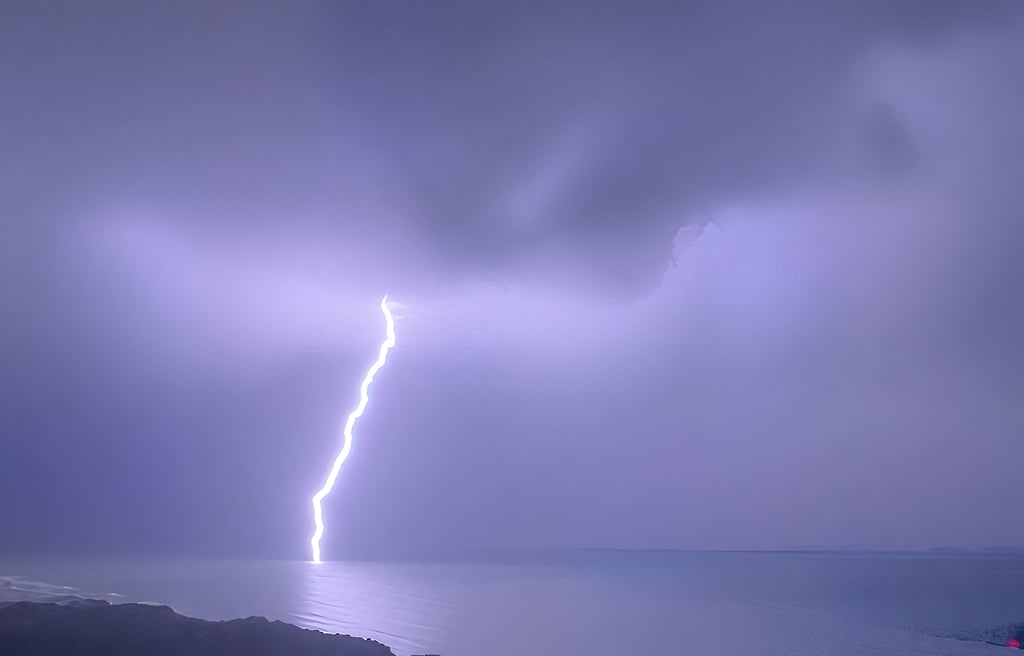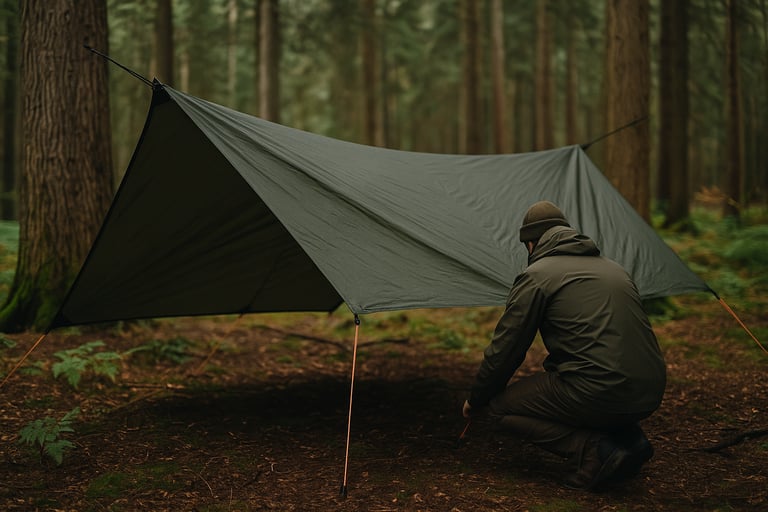How to Survive Thunderstorms in the Wilderness: Safety Tips for Hikers and Campers
Caught in a storm while hiking or camping? Learn how to survive thunderstorms in the wilderness with lightning safety tips, shelter strategies, and expert advice for outdoor emergencies.


How to Survive Thunderstorms in the Wilderness: Safety Tips for Hikers and Campers
Why Thunderstorms Are So Dangerous in the Wild
Thunderstorms in the wilderness can roll in fast, often with little warning. They're not just about rain — they bring lightning, strong winds, and sometimes even hail. And when you're far from the safety of buildings, thunderstorms can quickly turn into life-threatening situations. That’s why knowing how to stay safe during a storm is essential for every hiker, backpacker, or camper.
Even if the weather looks clear at the start of your hike, things can change rapidly, especially in mountainous or forested areas. Learning how to recognize danger and respond quickly can make all the difference.
How to Spot Storms Before They Hit
The best way to survive a thunderstorm is to avoid being caught in one in the first place. Before heading out, always check the local weather forecast, especially for afternoon storm risks in mountainous areas.
But once you’re in the wilderness, it’s important to recognize natural warning signs. If the sky darkens quickly, winds pick up, or you hear thunder (even faintly), that’s your cue to take action. Remember, if you can hear thunder, you’re within striking distance of lightning, even if the storm still looks far away.
Knowing how to read a topographic map can help you spot safe terrain features before storms arrive.
What to Do If You're Caught in a Thunderstorm
If you’re on high ground, exposed ridges, or near water, get to lower terrain immediately. Lightning is far more likely to strike peaks, isolated trees, or open areas. Move away from tall objects and avoid wide open spaces.
Find a low-lying area that’s not prone to flooding, like a depression or shallow ravine, and crouch down with your feet together. If you’re in a group, spread out at least 20 feet apart to reduce the chance of multiple injuries from a single lightning strike.
Avoid caves, overhangs, and tree clusters with tall, prominent trees. These might feel like shelter, but they can be extremely dangerous during lightning storms.
If someone is injured during the storm, basic wilderness first aid skills can help stabilize them until help arrives.
Shelter Strategies During a Storm
In the wilderness, you likely won’t have access to fully enclosed shelters, but that doesn’t mean you’re helpless. If you have a tent with metal poles, do not use it as a lightning shelter. Instead, set it up as low as possible and move a safe distance away while the storm passes.
If you have a tarp or emergency bivy, use it to protect yourself from wind and rain, but again, avoid anchoring it to large, isolated trees. Stay dry and insulated from the ground using a sleeping pad, pack, or dry clothing to prevent hypothermia if temperatures drop.
Check out our Shelter Building Section for more in depth information on other shelters you can build and how to build them.
Lightning Safety: What Not to Do
There are a few critical mistakes people make during wilderness thunderstorms. Never shelter directly under tall trees, and don’t lie flat on the ground, it increases your contact with the earth and can worsen a lightning ground current injury.
Don’t use metal trekking poles, tools, or gear during the storm. If you have electronics or metal objects in your pack, it’s smart to place them 50–100 feet away from where you take cover. And definitely avoid water sources like lakes or rivers, water conducts electricity and increases your risk of a strike.
After the Storm Passes
Wait at least 30 minutes after the last sound of thunder before leaving your shelter. Lightning can strike even after a storm appears to have moved on. Once it's safe, assess your surroundings and any gear that might have been exposed or damaged.
Take note of your location and check in if you’re using satellite communication or GPS. Thunderstorms can disorient even experienced hikers, especially if you moved to unfamiliar terrain for shelter.
Be Prepared Before You Go
The best defense against thunderstorms in the wilderness is preparation. Carry a small emergency tarp or bivy sack in your pack, learn the local weather patterns, and always have a plan for sudden changes. Knowing how to respond calmly and effectively is what turns a dangerous storm into just another adventure story.




© 2025. All rights reserved About | Privacy Policy | Terms and Conditions | Affiliate Disclosure | Disclaimer


